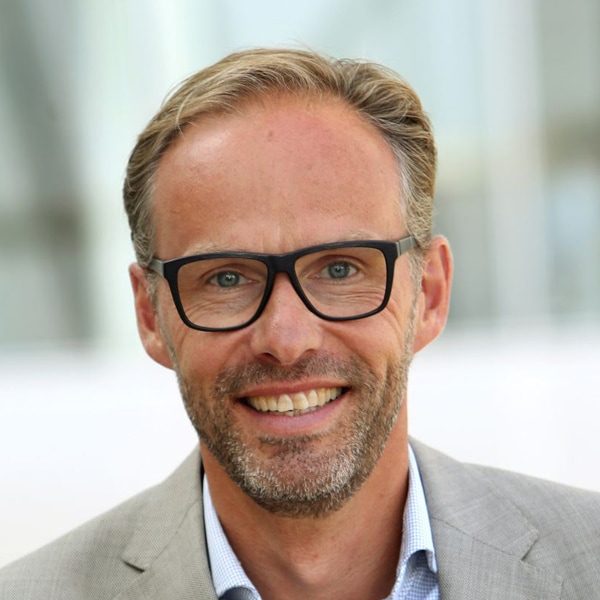By 2030, Fiber could be Everywhere has been saved

Blog
By 2030, Fiber could be Everywhere
In the densely populated Netherlands, fiber connections may become ubiquitous
In this third entry of the Future of Fiber blog series we will explore the possiblity of a fiber dominant future. As they do more and more online, both businesses and consumers need the best broadband connection they can get. With the inexorable rise in Internet traffic, the case for extensive deployment of FttH (fiber-to-the-home) is getting stronger both in the Netherlands and elsewhere.
In two of the four potential scenarios (see diagram) explored in the Deloitte’s Future of Fiber study , fiber becomes the dominant access technology by 2030.
In the super concentration scenario, incumbents use their existing copper and cable networks as cash cows to fund the rollout of fiber and limit the number of new market entrants, while in the disaggregation scenario, fiber networks are run by netcos1 that wholesale connectivity to multiple servcos2 . In both scenarios, FttH connectivity serves households and businesses in both rural areas and urban areas, replacing copper and cable networks .
In these scenarios, we assume other technologies are not able to compete with fiber or that the market perceives fiber to have a quality advantage, that results in fiber becoming the leading technology, with HFC (hybrid fiber coax) players also moving towards FttH. However, it is also plausible that HFC will continue to play an important role in the overall mix (see the second blog in this series).
As explained in the first blog, the rollout ambitions of today's network providers actually surpass the number of households. Therefore, in both the super concentration and disaggregation scenarios, there will likely be some areas with duplicate fiber networks. This risk will drive 'land grab' behavior by fiber players looking to secure first mover advantage, particularly in areas characterized by high roll-out costs, where it might not be economically feasible or environmentally desirable to have parallel fiber networks. Over-supply could drive consolidation, particularly among players with a strategic focus on maximizing network utilization and returns.
Does disaggregation make sense?
The economics will also determine whether the market is dominated by traditional telcos that provide both the network and the services or whether these companies are split into the aforementioned netcos and servcos.
A network that is open to a range of servcos is likely to be better utilized than a network that is only available to an in-house servco. Higher utilization generally means higher returns. Netcos can be worth 15 to 22 times their EBIT, while for telcos this is only 5-7 times their EBIT3. Such valuations are driving integrated telcos in some markets to separate their networks from their services4.
In doing so, they can potentially attract new investors that were uncomfortable with the mix of different businesses encompassed by a traditional telco model. Like other infrastructure-focused companies, netcos may appeal to investors with relatively long time horizons and a preference for relatively low risk investments.
But there are downsides to disaggregation. There can be synergies from having both a servco and netco in-house. A telco with its own dedicated infrastructure can tailor the network to its service propositions. For example, it might want to provide integrated edge compute capabilities to support latency-sensitive services, Internet of Things use cases, managed connectivity and other propositions that are closely tied to the capabilities of the network.
Keeping the Netherlands competitive
It is not yet clear which way the Dutch market will go. In the Netherlands, there are strong (partly) vertically-integrated telcos, such as KPN and VodafoneZiggo. But there are also promising new players pursuing the netco model. One of these is Open Dutch Fiber, which makes it network available on a wholesale basis. Its first servco customer is T-Mobile5.
Another key factor could be the stance of the Dutch regulator (ACM), which wants to ensure infrastructure and service competition. In 2021, ACM flagged it will monitor the level of consolidation in the Netherlands even more closely moving forward. It is currently investigating whether open access to fiber networks (and other networks) is required to safeguard competition in the Dutch market6.
In this light, ACM expects to finalize its investigation regarding access to the KPN and Glaspoort fiber networks later this year. On publishing a recent decision to make the updated KPN Glaspoort wholesale tariffs and conditions binding, ACM said its working hypothesis is that no additional wholesale regulation is required for KPN and Glaspoort at this stage7. However, ACM will share its research findings with relevant stakeholders and ask for their opinion before making the final decision.
For the final blog post in this series, we are interviewing industry leaders on their views on each of the four scenarios. If you want to prepare for the future of fiber in the Netherlands, watch this space.
1. Telcos that focus on building and managing infrastructure, which they then provide on a wholesale basis to retail service providers (servcos).
2. Telcos that focus on providing services, rather than building and
managing infrastructure
3. The Rise of the Netcos – Deloitte M&A Telecom Engineering Centre of Excellence (TEE)
4. The Rise of the Netcos – Deloitte M&A Telecom Engineering Centre of Excellence (TEE)
5. https://www.businesswire.com/news/home/20210406005995/en/KKR-and-DTCP-Roll-Out-Fiber-Infrastructure-in-the-Netherlands
6. update-marktstudie-uitrol-van-glasvezel-in-nederland'2021
7. https://www.acm.nl/nl/publicaties/acm-stelt-lagere-toegangstarieven-kpn-en-glaspoort-vast-om-concurrentie-voor-snel-internet-te-stimuleren
Recommendations
Future of Fiber
The Future of Fiber study dives into the possible outcomes for fiber connectivity in the Netherlands in the next ten years.
Does Fiber Face Credible Competition?
Connecting every household in the Netherlands to fiber may not make sense




